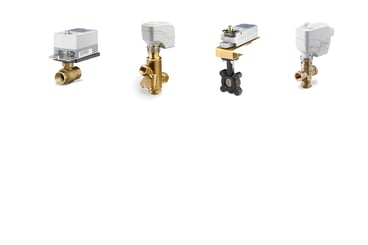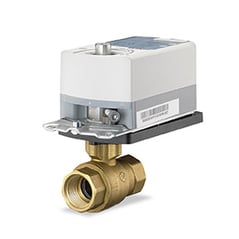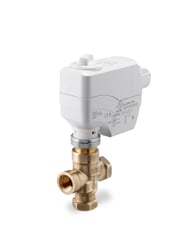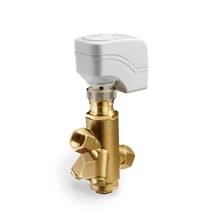It’s important to choose the right valve in a hydronic system for hydronic flow optimization and there are a variety of reasons why this is true. For starters, Hydronic systems are highly interdependent systems. Each system component will interact with one another and impact performance. Valves are the critical devices that control heat transfer in hydronic systems.
Proper valve sizing and selection involves looking at the complete system. Valves not sized and selected correctly lead to undesirable outcomes not only at the heart transfer device but also the overall mechanical system.
 Every component in a hydronic system has some level of influence on the control and performance of the overall system. Valves are key because they are the controlling devices at the critical areas of heat transfer.
Every component in a hydronic system has some level of influence on the control and performance of the overall system. Valves are key because they are the controlling devices at the critical areas of heat transfer.
Valves are sized based on a capacity or flow co-efficient. The flow capacity of a valve at different pressure drops may be calculated based on this coefficient. There are engineering design questions that need to be answered in order to help maintain design intent of the system:
- Determine the valve type
- Determine the medium being controlled
- Determine the flow rate of equipment to be controlled
- Determine specified pressure drop
- Calculate Cv
- Determine number of ports
- Determine required ANSI pressure class rating
- Determine required flow characteristic
- Determine trim requirements
- Determine type of packing
- Determine type of mechanical connection to the piping system
- For the actuator determine normal position and failsafe requirements
- Determine type of actuator and control signal
- Determine if manual override is required
- Based on all of these inputs, select an orderable valve assembly
- Check close off pressure
- Calculate actual pressure drop based on valve selected using Cv formula
- Check for percent authority, where percent authority should be between 25% and 50%
There are four common valve types for hydronic systems. These types are common ball valves, butterfly valves, globe valves and pressure independent control valves. Each valve type has advantages and disadvantages as well as recommended uses.
 Common Ball Valve
Common Ball Valve
Ball valves are recommended for use in fully open/closed applications and modulating applications.
Advantages of ball valves include relatively low cost, high flow capacity, tight sealing with low torque and high close off pressure.
Disadvantages include inherent dead bands.
Butterfly Valves
Butterfly valves are recommended for fully open/closed applications, throttling applications and small pressure drop applications.
Advantages of butterfly valves are their relatively low cost, their high flow capacity and their low pressure drop.
Disadvantages are high torque requirements for control and low flow cavitation risk.
 Globe Valves
Globe Valves
Globe valves are recommended for precise flow regulation, frequent and wide throttling and high pressure drop applications.
Advantages of globe valves are suited for water and steam, efficient and precise throttling, highly accurate flow control
Disadvantages are relatively low flow coefficients, relatively higher costs than other valves
Pressure Independent Control Valves
Pressure independent control valves are recommended for frequent system pressure changes, precise flow regulation, frequent and wide throttling and high pressure drop applications.
Advantages of these types of valves are efficient and precise throttling, highly accurate flow control, automatic dynamic balancing and flow limiting capabilities.
Disadvantages are relatively higher costs than other valves.
For additional assistance in selecting the best valves for your hydronic system
To place your valve order
For information about Radwell Products and Services



